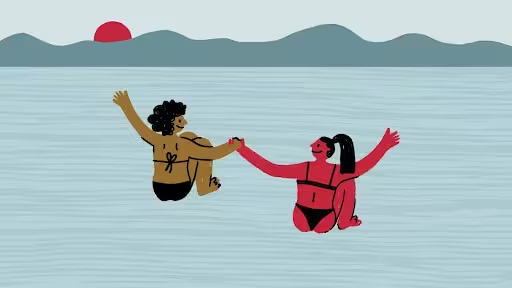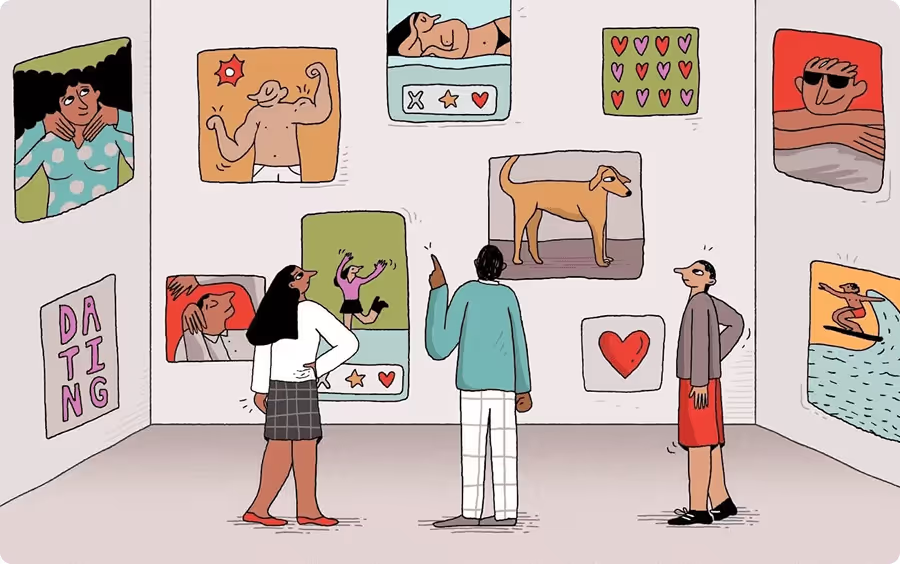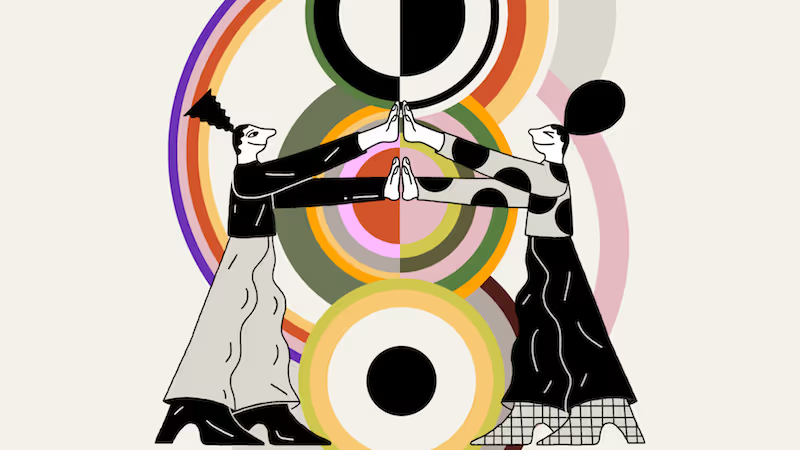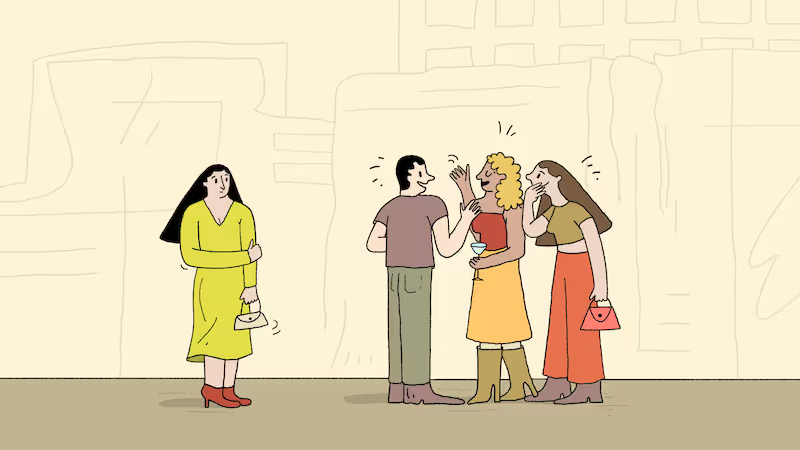Shall We Begin?
There are few words more joyful and more vulnerable than “best friend.”
We say it easily as children and more carefully as adults. Friendship is the most free-choice relationship we have. There are no vows, no papers, no cultural scripts to follow, only reciprocity. You can’t be someone’s friend if they’re not yours.
LISTEN IN
In two very different episodes of my podcast Where Should We Begin?, I sat with two pairs of best friends: Emily and Olivia, who once called each other their “college wives,” and “A” and “S,” both sons of South Asian immigrants who met back in preschool in the American South. In recent years, the two women’s priorities have shifted, though they’ve never quite let go of each other. For the men, they’ve always been separated by class, but each represents a part of the other they wish they had. Both episodes focus on a specific rupture, but what emerges is something deeper: the slow drift of friendship under the weight of life and the longing to remain close despite it all.
Click here to listen on Apple Podcasts.
GROWING UP
Emily and Olivia shared a love story, not romantic, but undeniably intimate. For four years, they were everything to each other: emergency contacts, dinner dates, sounding boards. Then came the slow erosion—boyfriends, career shifts, unspoken resentments crocheted into complex narratives. It wasn’t one moment that caused the pain; it was the accumulation of missed moments.
For the two men, “A” and “S,” their career and financial decisions have left a gulf between them. One chose success; the other, connection. One grew up with a sense of deep obligation to give back to his parents. The other carried guilt for carving his own path. Each admired the other but also disavowed their choices, which left each one convinced that the other was no longer interested in being friends.
DO YOU WANT TO STILL BE FRIENDS?
All four of these people have been asked by others, or have asked themselves, “Why do you still want a friendship with this person?” Simply: they don’t want to give up on their shared history or the future they had so often imagined together.
And, so, we must ask: if you want to keep an important friendship, what do you need to do now to help that friendship continue to grow and change over time? Friendship often operates in the background of our lives, assumed to be sturdy, low-maintenance, unshakable. But even the most natural friendships need effort to stay alive. This means scheduled time together, rituals such as shared walks, bi-weekly calls, or annual trips.
Perhaps this focus is a means of easing my own friendship aches. In recent years, three of my closest friends in New York have moved away. One more is leaving for Paris this month: the inimitable Erin Allweiss, cofounder of No. 29, who not only is a dear friend but also brought two of my closest colleagues into my life and me into theirs. Each of these friends who have moved are the types who gather you in, arrange parties, and connect people who otherwise may not have met. They are generous, special, and fun.
It’s easy to rely on these friends for community and sometimes hard to remember that they need you, too, especially when they are starting anew—be it a new place, a new job, a new romance, a new child, a new loss. Your intention and attention is the tide that lifts all boats. As the philosopher Cicero once wrote, “Friendship improves happiness and abates misery, by the doubling of our joy and the dividing of our grief.” But that only happens if we show up. As bell hooks reminded us, “Rarely, if ever, are any of us healed in isolation.”
Let’s Turn the Lens on You
Step 1: Choose Your Person
Take the pressure off by choosing a friend you’ve drifted from and want to reconnect with, not one with whom you had a major rupture.
Step 2: Reach Out with Intention
Send them a voice memo, text, or short email that begins with:
“Hey, I’ve been thinking about you. I just listened to a story about two friends who found their way back to each other and it made me miss you.”
Keep it simple. Share one memory, one feeling, or one thing you appreciate about them.
Step 3: Create a Micro-Ritual
Extend a small invitation to connect with them regularly. This could be a monthly walk, call, or anything else. No pressure, just presence.
More from Esther
LISTEN TO WHERE SHOULD WE BEGIN? ON APPLE PODCASTS | tune in
This summer on my podcast, we’re taking a journey through the love and heartbreak of friendship. Tune in to listen to the two episodes mentioned above, plus a special conversation with Trevor Noah and so much more. Subscribe on Apple Podcasts for ad-free listening, bonus episodes, and exclusive behind-the-scenes content.
TURNING CONFLICT INTO CONNECTION | learn more
Conflict is intrinsic to every relationship—even friendship. In this short digital course, you’ll learn about the real reasons we fight, discover solutions for de-escalating conflict, and find new frameworks to help you reconcile and repair after an argument. Enroll today for just $99.
GAIN NEW INSIGHTS INTO FRIENDSHIP | explore articles
Friendship is different from romantic or filial love, but it’s just as important. This collection of articles highlights the unique nature—and struggle—of friendship and offers insights to help you navigate yours with more confidence.
Conversation Starters
A compendium of highly recommended sources of inspiration and information
TO READ:
- The Sisters, a new novel by Jonas Hassen Khemiri, began when Khemiri sensed that someone he loved had put a curse on him. In his own words: “I didn’t believe in curses. A curse is just a story, right? But stories are powerful, especially the ones that try to predict our future.” The titular sisters at the heart of Khemiri’s novel are also cursed, which we observe as we follow them over the course of 35 years. It’s a journey of love and loss, betrayal and forgiveness, learning new languages—and forgetting old ones.







.svg)





